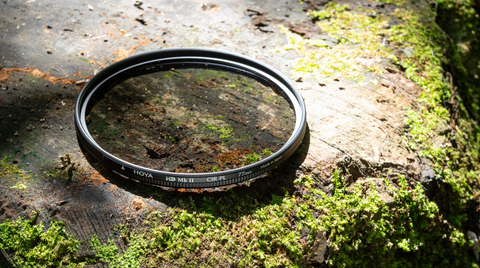Are you looking to add more depth and vibrance to your landscape photography? Consider using a polariser! Polarisers are a great way to enhance the color, contrast and saturation of your shots, allowing you to capture stunning images with greater clarity and vibrancy. In this blog post, we’ll cover the basics of how to use a polariser to take amazing landscape photographs.
A polariser is a filter that is placed over the lens of the camera and reduces glare and reflections. This allows more light and color to be transmitted to the camera, resulting in a richer, more vibrant image. It also reduces the amount of haze in the atmosphere, making the colors of your landscape look more vibrant and saturated.

Image Above Sourced from Hoya Website
Katie and I prefer to use Hoya Polarisers due to their quality and you can read more about them on the Hoya Website. When taking landscape photos with a polariser, it’s important to remember that the filter will darken the image as you can see in the image above it blocks out some of the light. To counter this, you’ll need to adjust the exposure settings on your camera.
When taking landscape photos with a polariser, it’s important to keep in mind the position of the sun. If the sun is in front of you, the polariser will reduce the amount of glare and reflections, but if the sun is behind you, it won’t have much of an effect. Additionally, the polariser will be most effective when the sky is slightly cloudy.
Using a polariser for landscape photography can be a great way to add depth, contrast and vibrancy to your shots. The image at the top of this blog post, "Argyle Twilight", is a great example of the detail and vibrancy you can get out of using a polariser. With a little practice, you’ll be able to capture beautiful images with greater clarity and detail. Finally, don’t forget to clean the filter before you use it. Cleaning it will help ensure that the images you take are clear and crisp.
As always, if you have any questions about using polarisers, please don't hesitate to get in touch or drop a comment below.

